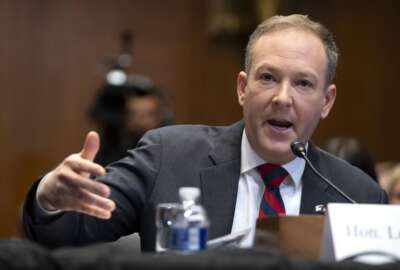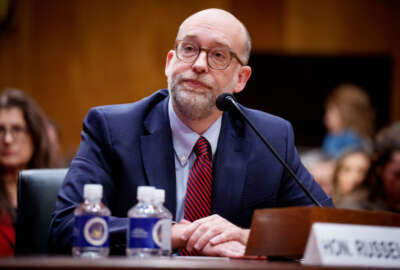Increasing building security may be a problem for FPS, GAO says
Homeland Security Secretary Jeh Johnson has said he wants to increase security at federal buildings. But the FPS, the agency responsible for doing so, may not be up...
Matt Wingfield
Federal News Radio
Shortly after a gunman opened fire at Canada’s National War Memorial and Parliament, Homeland Security Secretary Jeh Johnson said he wanted to beef up security at federal buildings as a “precautionary step.”
The problem is that the people protecting those buildings may not be qualified for the job, said Mark Goldstein, the Government Accountability Office’s director of physical infrastructure issues, on the Federal Drive with Tom Temin. And the increased workload this security boost presents to the Federal Protective Service (FPS) may exacerbate the agency’s existing problems.
According to the most recent GAO security report from May, protecting federal buildings remains a problem for the FPS, in large part because more than one-third of the agency’s contract guards aren’t properly trained.
“An official from one of FPS’ contract guard companies stated that 133 (about 38 percent) of its approximately 350 guards have never received screener training,” the report stated. “As a result, guards deployed to federal facilities may be using x-ray and magnetometer equipment that they are not qualified to use.”
Though the Canadian incident shined the spotlight on building security, this isn’t a new issue, Goldstein said. As far back as 2008, GAO had observed alarming problems with security, as investigators were able to smuggle fake bomb components past security in 10 different (presumed) high-security buildings in four different cities.
“Once inside the facilities, the testers assembled the bombs in restrooms, put them in briefcases and ‘walked freely’ into government offices,” said the GAO report.
“[FPS] has told us they’re committed to increasing and improving the training that guards get,” Goldstein said, “but at this point there still remains a number of contract guards and guard companies for whom the basic training on magnetometers and x-ray machines, active shooter training and things like that, have not been completed.”
Among the other weaknesses addressed in the GAO report was an inability to tell how many guards had received active-shooter response and proper screening training. Nearly 25 percent of the 276 contract guard files GAO reviewed lacked required training and certification documents.
“Since fiscal year 2010, GAO has made 31 recommendations to improve FPS’ contract guard and risk-assessment processes,” the report stated, “of which six were implemented, 10 are in process and 15 have not been implemented.”
And the problem isn’t going away.
“We can’t say that [building security] is better [than in 2008],” Goldstein said. “We do know that … quite a number of guards in the guard companies we looked at still did not have basic training. This is training that [FPS] promised [it] would do after the penetration test [from 2008]. … We still continue to find significant lapses in that area.”
The problems with guard training aren’t all on FPS though, Goldstein added. A number of faults lie with the guard companies themselves. Despite the fact that all guards are supposed to meet certain training criteria — from certifications for firearms to CPR — before standing post, Goldstein said the contract guard companies FPS uses can’t assure the agency that training has been issued.
“The FPS itself is not in a position to be able to oversee the contract guard force in a way that they have assurances that the guard companies they’re employing have received adequate training,” Goldstein said.
And while Goldstein isn’t ready to lay the blame solely on FPS, he does have three recommendations for the agency to employ immediately.
“We think they need to improve the risk management process, so they can determine which buildings really require enhanced countermeasures,” Goldstein said. “Obviously, we don’t have unlimited resources, so they need to understand what to protect.”
Secondly, Goldstein said the agency needs to start ensuring its contract guards are properly trained. “It doesn’t make sense to increase the sensitivity of a magnetometer or an x-ray machine if the guard standing there doesn’t know how to use the machine to start with.”
Lastly, Goldstein said the agency needs to make sure the inspectors, “the federal police officers, if you will,” are doing their jobs by ensuring guards are actually standing post, that guards have their qualifications and that “the inspectors themselves are doing the work they need to do.”
Despite the presumed increased workload and the flaws GAO has uncovered in the past, Goldstein said he believes the FPS is up to Johnson’s task.
“They can take on more responsibility,” Goldstein said. “And the government probably needs them to if we’re going to ensure that the people who work in and come to our public buildings are safe and secure. But it’s going to take an extended effort on their part.”
RELATED STORIES
Canada’s PM says shooting rampage was terrorism
U.S. to increase security at some federal buildings
Lawmakers worried DHS losing faith in Federal Protective Service
Copyright © 2025 Federal News Network. All rights reserved. This website is not intended for users located within the European Economic Area.





